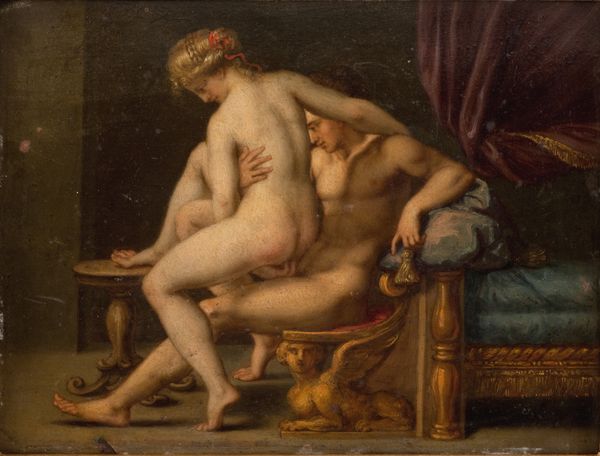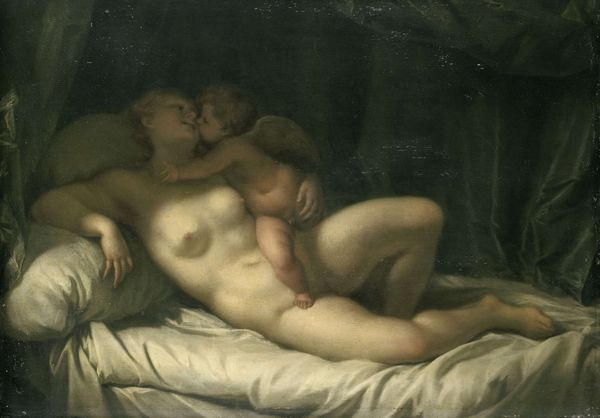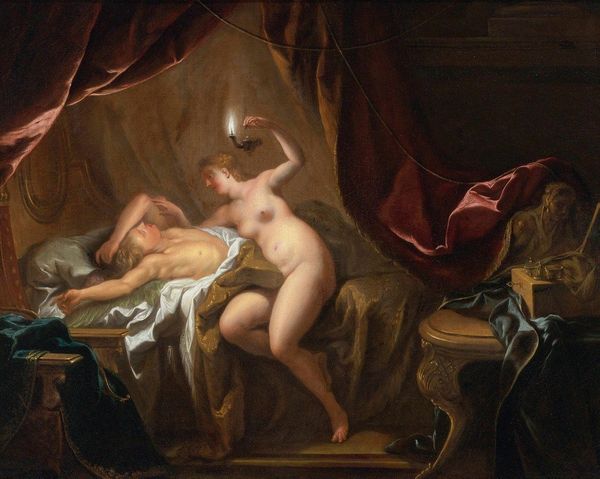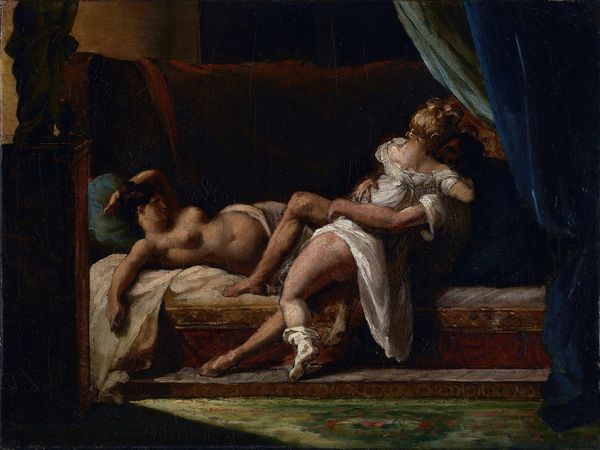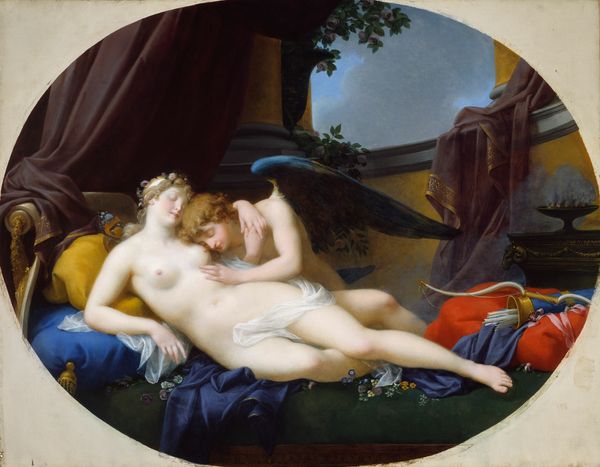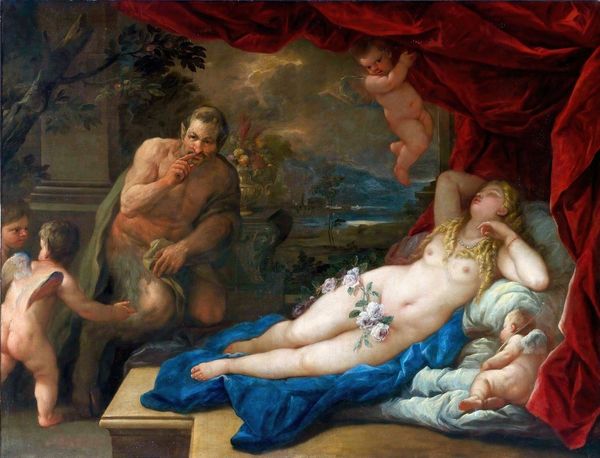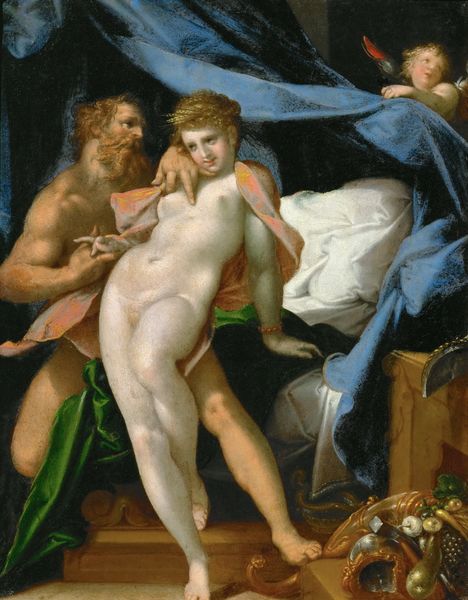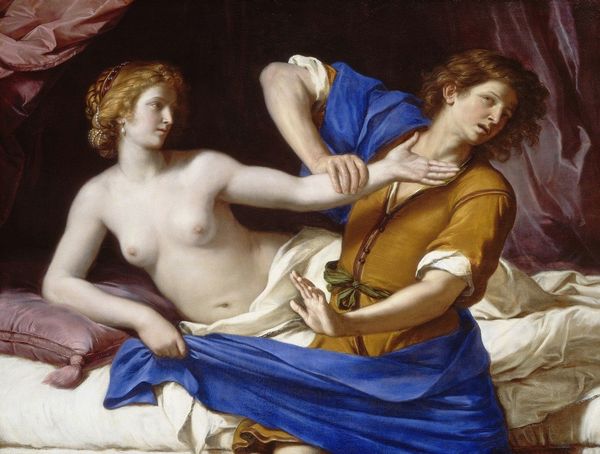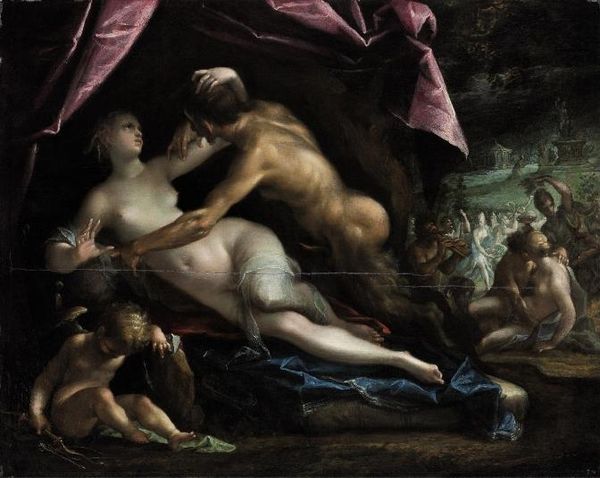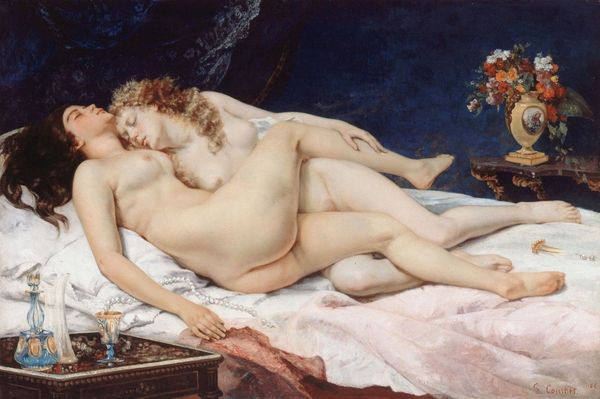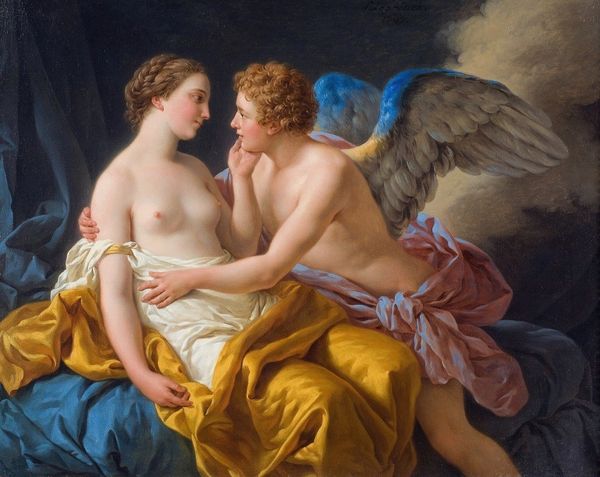
Copyright: Public Domain: Artvee
Louis-Jean-François Lagrenée painted ‘Mars and Venus, Allegory of Peace’ in France, at a time when the Académie Royale de Peinture et de Sculpture dictated artistic taste. This painting, steeped in classical symbolism, reflects the era’s interest in portraying virtue and idealized beauty. In this allegory, we see Mars, the god of war, seemingly entranced by the sleeping Venus, goddess of love, while doves, symbols of peace, flutter nearby, and his armor lies discarded on the floor. Lagrenée uses these visual cues to explore the theme of peace triumphing over war. France in the 1700s was a society of strict social hierarchies, and art often served to reinforce moral values, as promoted by the church and state. By representing Mars in a state of surrender to love, Lagrenée perhaps subtly comments on the preference of peace over conflict. To fully appreciate this work, we can turn to the writings of art critics from that time, records from the Académie Royale, and studies of the social history of 18th-century France. Art serves as a mirror reflecting the values, beliefs, and power structures of the society in which it was created.
Comments
No comments
Be the first to comment and join the conversation on the ultimate creative platform.

